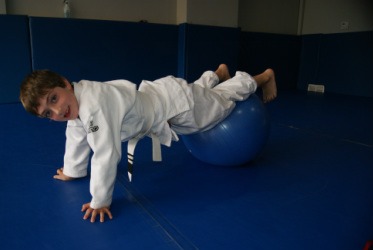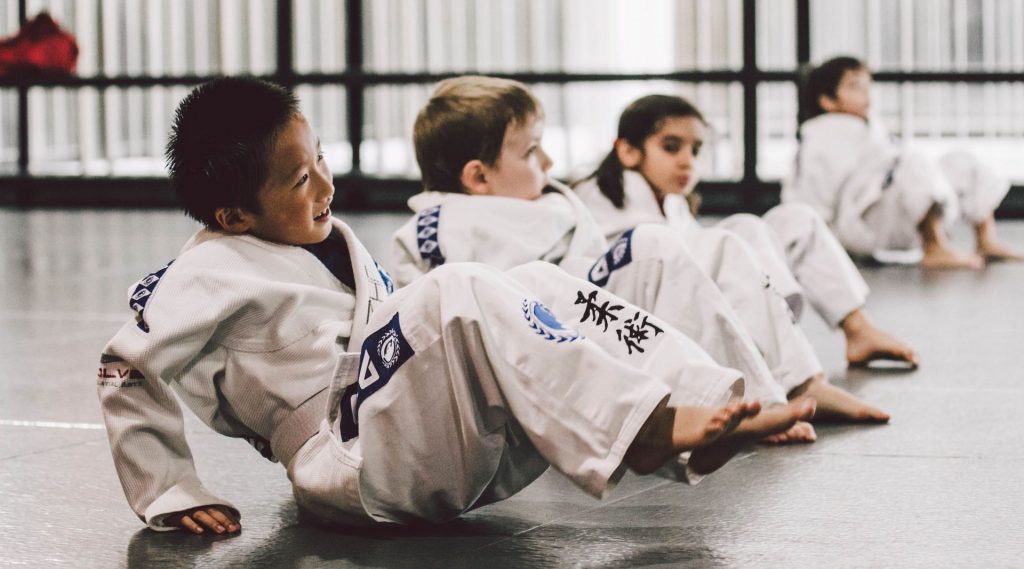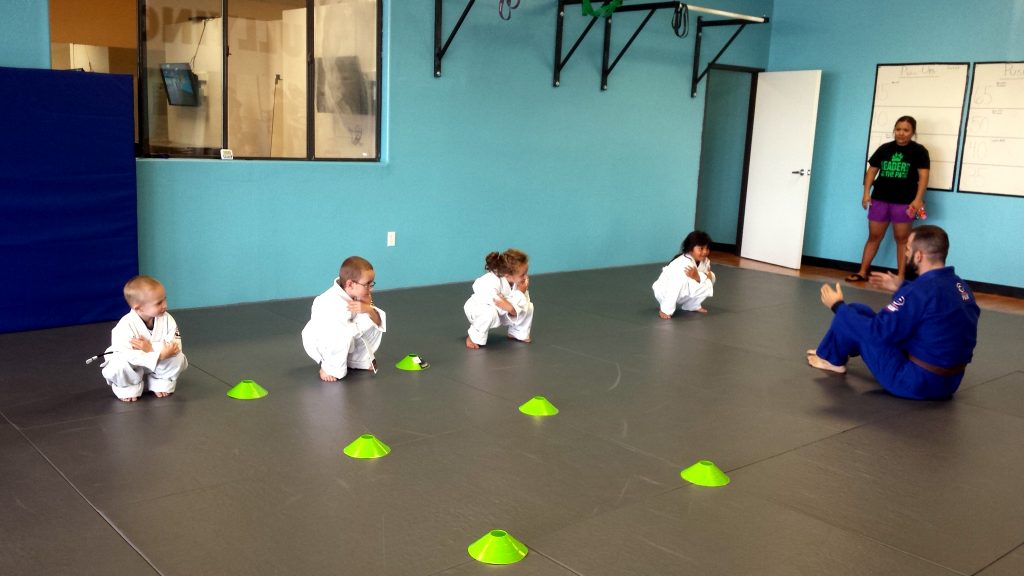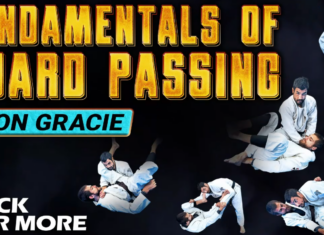
Kids Jiu-Jitsu classes are very different than adult classes. Kids require a different approach since they start off fairly early in BJJ. To that extent, drills are of the utmost importance for kids Jiu-Jitsu classes. But all BJJ drills are not appropriate, nor effective in this case. there’s a very specific set of drills aimed at developing very specific abilities in children.
Do you see yourself as a complete Brazilian Jiu-Jitsu instructor or coach? Well, unless you have experience with kids Jiu-Jitsu classes, you’re not as well rounded as you might think. Teaching adult classes is quite an easy feat to accomplish. Even juvenile classes are not much of a hassle in BJJ since the art is so entertaining. Kids Jiu-Jitsu classes, on the other hand, are a completely different ball game. Kids, in general, are quite difficult to manage when in large numbers. Add to that age and the complexity of Jiu-Jitsu as a sport and you have quite the task on your hands. However, with the right approach, planning, and curriculum, you can turn kids into BJJ beasts. Not only that, but you’ll also become a better coach for it as well.
The reason why kids Jiu-Jitsu classes are so difficult to teach is mainly due to a few main reasons. For starters, age. Kids classes include children with a very large age span, which means you get lots of kids at different stages of growth. Not only that, but the number of kids per class is also a huge factor. The more kids you have, the more potential there is for unrest. Furthermore, there’s the issue of attention. Older kids usually are able to stay focused for longer. With younger children though, getting them to stay on course requires patience and tactics. Finally, there’s the technical part of it all. Children need to stay safe, yet learn a martial art. They also need to be physically active and learn new motor patterns correctly. This is where kids Jiu-Jitsu drills come in.
The Demography Of Kids Jiu-Jitsu Class
Let’s start with the basics first – who should you expect to see in a kids Jiu-Jitsu class? to begin with, you’re going to have kids ranging from the age of 4 to the age of 12. That is an 8 year age difference which, in kids terms, is huge. With kids, even a year makes a difference, let alone 8! This usually translates into two things. First, you’ll have to manage class discipline by making sure kids behave themselves and that there’s absolutely no form of bullying! Secondly, you need to make sure you work the correct body mechanics with each age group. The fact that separate kids groups are not always available makes this even more daunting.

Which brings us to another really important point of a kids Jiu-Jitsu class. Attention. This one is actually pretty simple – the younger the kids, the smaller the attention span. That means you’ll need to discover ways to keep discipline, provide a fun experience for the children and still manage to teach them some Jiu-Jitsu. Might sound impossible, but it is actually quite easily achievable.
Optimal BJJ Class Structure For Kids
The ultimate goal of the class is for the kids to learn while having fun. Given today’s propensity for computers, tablets, and a generally indoors life, kids are way back when it comes to movement. Rediscovering what their bodies can do should be the first goal of a good instructor. That said, movement learning should start from the first minute. The warm-up is the perfect time to get kids in the mood for the class through talking, while also doing BJJ specific movements at an appropriate pace.
Forget about free rolling at any point of the class. Furthermore, the technical part of the class needs to be short, concise and fun. Otherwise, kids are going to lose interest at the speed of light!
Immediately following the warm-up should be a session of practicing movement. This is the first point of introducing drills. The animal-type movement seems to resonate greatly with kids, provided you hype them for it. The aim should be to make sure kids execute the drills as perfectly as possible since this is where kids are going to get eth most benefit.

Finally, always end class with a game, again focusing on BJJ specific movements. To conclude class, make sure you leave 5 minutes at the end to talk. There’s always a message for kids in martial arts and you should use every opportunity to convey it.
The Best BJJ Drills For Kids
The best way to approach BJJ drills for kids is in three distinct categories. First, you have solo drills that are intended to develop the correct movement patterns in children. Secondly, there area partner drills which are both highly specific to BJJ and the kids how to interact with partners. Finally, there are games, which are in essence group or partner drills, that promote teamwork as well as teach kids how to become competitive in sports.
1. Animal Drills
Animal movements are a great way to check all the boxes of a successful kid’s Jiu-Jitsu class. They offer different levels of complexity, they’re fun for kids and they engage they’re bodies as well as their minds. The best way to approach animal drills is to take them from the easiest towards more complex ones. Pay close attention to the youngest in class, since it is most important for them to get every little detail of the movement right. If needed, look to modify a move to fit a kid’s needs and abilities.

2. BJJ Specific Movements
BJJ specific movements are another great addition to animal drills. You could introduce them before, after or mixed in with the animal drills. Pay close attention to the execution of the move. Here, instead of going for a race, make sure to single out the kids that do it the best. This is going to encourage other kids to improve their technique because it gets them a reward. it is still a competitive environment, but this time, one focused on the quality of movement.
In terms of a specific movement, there’s no beating shrimping. Get kids to shrimp in every possible direction so that the really get the hang of the movement. Break falls are also essential movements that need to be approached with the utmost care. The technical standup is another one that is a must for a kids Jiu-Jitsu class.
3. Partner Drills
Executing a given exercise with a partner provides kids with the experience of working with another child. Furthermore, they can work on specific BJJ moves at the same time. For the youngest members of the class, partner drills can take the place of traditional technical demonstration.
There are a whole bunch of drills that fit this description perfectly. What needs to be at the forefront of your mind as an instructor here, is safety. Make sure kids are performing the drills in a safe manner. Next, make sure they’re going about the drill as technically correct as possible.
The top drills of choice here include judo throw entries (without actually throwing), guard passing (simply stepping to the side of a static partner’s knees) on each side, opening the closed guard or very simple sweeping patterns. Even retention drills such as staying in the mount or keep hold of someone in side control are a good idea.
4. Games
Games are very often the highlight of a child’s experience in a BJJ class. If you have the opportunity, try to include a couple of games per class. If not, just go with one per class, but make sure the kids earn it. Seeing the game as a reward for good behavior in class promotes the development of good values in children. Furthermore, it makes them even more hyped for the game itself.
A game in a kids Jiu-Jitsu class still needs to be related to learning the art. You could look to promote competitiveness, athleticism, strength development, tactics, etc, depending on your desire. Pulling rope (or a belt), racing in a crawling manner, the great wall of China, carrying each other and a whole other host of games are a perfect fit for a kids Jiu-JItsu class. Remember to keep it fun and effective, while providing a safe environment for the kids to learn.


![Darce Choke Encyclopedia – Origins, Mechanics and Variations [2025] BJJ, choke, Brabo, BJJ Darce Choke, D'arce Choke, Darce BJJ Choke](https://bjj-world.com/wp-content/uploads/2017/11/JungPoirierLeeYahoo-218x150.jpg)









![Closet Closed Guard Craig Jones DVD Review [2025] Closet Closed Guard Craig Jones DVD Review](https://bjj-world.com/wp-content/uploads/2025/03/closet-closed-guard-craig-jones-dvd-review-218x150.png)
![Xanadu Back Takes Levi Jones-Leary DVD Review [2025] Xanadu Back Takes Levi Jones-Leary DVD Review](https://bjj-world.com/wp-content/uploads/2025/03/xanadu-back-takes-levi-jones-leary-dvd-review-218x150.png)

![No-Gi Grapplers Guide To Front Headlock Joel Bane DVD Review [2025] No-Gi Grapplers Guide To Front Headlock Joel Bane DVD Review](https://bjj-world.com/wp-content/uploads/2025/03/no-gi-front-headlock-joel-bane-dvd-review-218x150.png)

![Get Off My Legs Gringo Craig Jones DVD Review [2025] Get Off My Legs Gringo Craig Jones DVD Review](https://bjj-world.com/wp-content/uploads/2025/03/get-off-my-legs-gringo-craig-jones-dvd-review-218x150.png)

![Complete Front Headlock System Michael Pixley DVD Review [2024] Complete Front Headlock System Michael Pixley DVD Review](https://bjj-world.com/wp-content/uploads/2024/10/front-headlock-system-michael-pixley-dvd-review-100x70.png)
![Jeff Glover DVD Bundle Review: Chokin’ Around With Uncle Jeff [2024] Jeff Glover DVD Bundle Review: Chokin' Around With Uncle Jeff](https://bjj-world.com/wp-content/uploads/2024/10/jeff-glover-dvd-bundle-review-chokin-around-100x70.png)
![Giancarlo Bodoni DVD Bundle Essential Connections Full Review [2024] Giancarlo Bodoni DVD Bundle Essential Connections Full Review](https://bjj-world.com/wp-content/uploads/2024/09/giancarlo-bodoni-dvd-bundle-essential-connections-100x70.png)
![Shoulder Lock Mastery Zach Green DVD Review [2025] Shoulder Lock Mastery Zach Green DVD Review](https://bjj-world.com/wp-content/uploads/2024/12/shoulder-lock-mastery-zach-green-dvd-review-100x70.png)
![Daisy Fresh WHITE BELT Wrestling Curriculum DVD Review [2024] Daisy Fresh WHITE BELT Wrestling Curriculum DVD Review](https://bjj-world.com/wp-content/uploads/2024/10/daisy-fresh-white-belt-wrestling-curriculum-review-100x70.png)
![Henry Akins Black Hole No-Gi Closed Guard DVD Review [2024] Henry Akins Black Hole No-Gi Closed Guard DVD Review](https://bjj-world.com/wp-content/uploads/2024/09/henry-akins-black-hole-no-gi-closed-guard-dvd-review-100x70.png)






![Lockdown Quickstart Guide Cameron Mellott DVD Review [2025] Lockdown Quickstart Guide Cameron Mellott DVD Review](https://bjj-world.com/wp-content/uploads/2025/03/lockdown-quickstart-guide-cameron-mellott-dvd-review-100x70.png)
![I Got Your Back Jake Straus DVD Review [2025] I Got Your Back Jake Straus DVD Review](https://bjj-world.com/wp-content/uploads/2025/03/i-got-your-back-jake-straus-dvd-review-100x70.png)



![Master The Move The American Lock John Danaher DVD Review [2024] Master The Move The American Lock John Danaher DVD Review](https://bjj-world.com/wp-content/uploads/2024/12/the-american-lock-john-danaher-dvd-review-100x70.png)


![Slay The Wrestle Up Guard Nick Rodriguez DVD Review [2024] Slay The Wrestle Up Guard Nick Rodriguez DVD Review](https://bjj-world.com/wp-content/uploads/2024/12/slay-the-wrestle-up-guard-nick-rodriguez-dvd-review-100x70.png)


![Complete Fundamentals Curriculum Eliot Marshall DVD Review [2025] Complete Fundamentals Curriculum Eliot Marshall DVD Review](https://bjj-world.com/wp-content/uploads/2025/02/fundamentals-curriculum-eliot-marshall-dvd-review-100x70.png)

![Breaking Their Guard Mikey Musumeci DVD Review [2025] Breaking Their Guard Mikey Musumeci DVD Review](https://bjj-world.com/wp-content/uploads/2025/02/breaking-their-guard-mikey-musumeci-dvd-review-100x70.png)
![Simplify the System Side Scissor Brian Glick DVD Review [2024] Simplify the System Side Scissor Brian Glick DVD Review](https://bjj-world.com/wp-content/uploads/2024/09/side-scissor-brian-glick-dvd-review-2024-100x70.png)

![Leg Locks From Beginner To Advanced Dan Manasoiu DVD Review [2024] Leg Locks From Beginner To Advanced Dan Manasoiu DVD Review](https://bjj-world.com/wp-content/uploads/2024/12/leg-locks-from-beginner-to-advanced-dan-manasoiu-dvd-review-100x70.png)